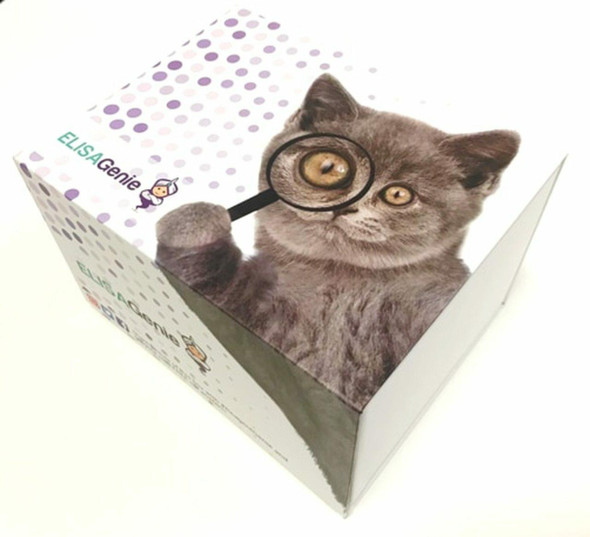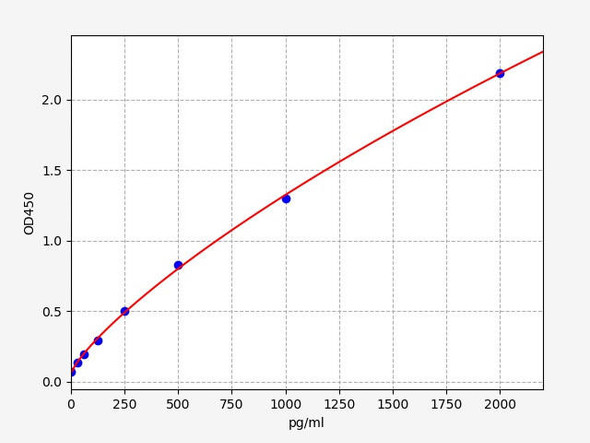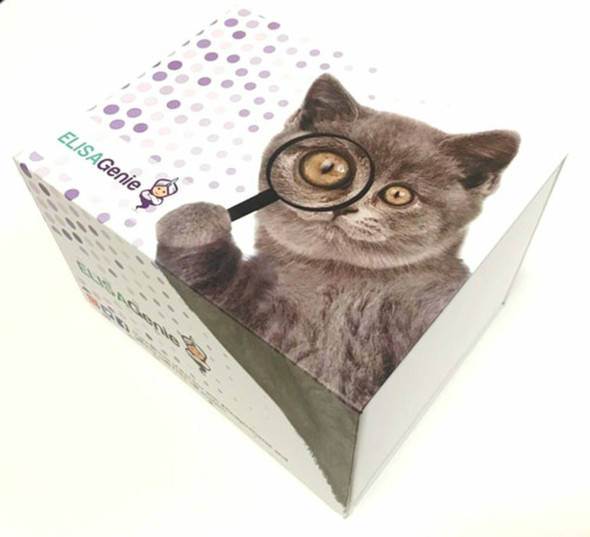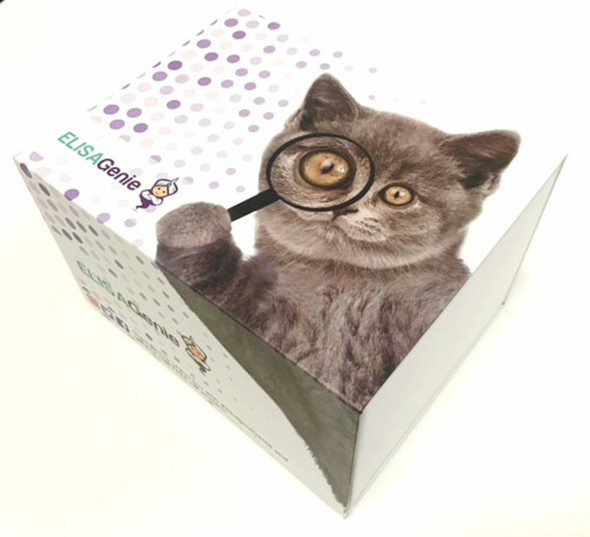Mouse EGF (Epidermal growth factor) ELISA Kit (MOES00645)
- SKU:
- MOES00645
- Product Type:
- ELISA Kit
- Size:
- 96 Assays
- Uniprot:
- P01132
- Sensitivity:
- 9.38pg/mL
- Range:
- 15.63-1000pg/mL
- ELISA Type:
- Sandwich
- Synonyms:
- URG, HOMG4, Beta-Urogastrone
- Reactivity:
- Mouse
- Sample Type:
- Serum, plasma and other biological fluids
Description
Mouse EGF (Epidermal growth factor) ELISA Kit
The Mouse EGF (Epidermal Growth Factor) ELISA Kit is specifically designed for the precise quantification of EGF levels in mouse serum, plasma, and cell culture supernatants. With its high sensitivity and specificity, this kit delivers accurate and reproducible results, making it an excellent tool for various research applications.EGF is a key growth factor that plays a critical role in cell proliferation, differentiation, and survival. It is involved in various physiological processes, including wound healing, tissue regeneration, and development.
Dysregulation of EGF signaling has been implicated in diseases such as cancer and inflammatory disorders, underscoring the importance of studying EGF levels for medical research and therapeutic development.Order the Mouse EGF ELISA Kit today to advance your research and gain valuable insights into the role of EGF in mouse biology.
| Assay type: | Sandwich |
| Format: | 96T |
| Assay time: | 4.5h |
| Reactivity: | Mouse |
| Detection Method: | Colormetric |
| Detection Range: | 15.63-1000 pg/mL |
| Sensitivity: | 9.38 pg/mL |
| Sample Volume Required Per Well: | 100µL |
| Sample Type: | Serum, plasma and other biological fluids |
| Specificity: | This kit recognizes Mouse EGF in samples. No significant cross-reactivity or interference between Mouse EGF and analogues was observed. |
This ELISA kit uses Sandwich-ELISA as the method. The micro ELISA plate provided in this kit has been pre-coated with an antibody specific to Mouse EGF. Standards or samples are added to the appropriate micro ELISA plate wells and combined with the specific antibody. Then a biotinylated detection antibody specific for Mouse EGF and Avidin-Horseradish Peroxidase (HRP) conjugate are added to each micro plate well successively and incubated. Free components are washed away. The substrate solution is added to each well. Only those wells that contain Mouse EGF, biotinylated detection antibody and Avidin-HRP conjugate will appear blue in color. The enzyme-substrate reaction is terminated by adding Stop Solution and the color turns yellow. The optical density (OD) is measured spectrophotometrically at a wavelength of 450 nm ± 2 nm. The OD value is proportional to the concentration of Mouse EGF. The concentration of Mouse EGF in samples can be calculated by comparing the OD of the samples to the standard curve.
| UniProt Protein Function: | EGF: EGF stimulates the growth of various epidermal and epithelial tissues in vivo and in vitro and of some fibroblasts in cell culture. Magnesiotropic hormone that stimulates magnesium reabsorption in the renal distal convoluted tubule via engagement of EGFR and activation of the magnesium channel TRPM6. Defects in EGF are the cause of hypomagnesemia type 4 (HOMG4); also known as renal hypomagnesemia normocalciuric. HOMG4 is a disorder characterized by massive renal hypomagnesemia and normal levels of serum calcium and calcium excretion. Clinical features include seizures, mild-to mederate psychomotor retardation, and brisk tendon reflexes. 2 isoforms of the human protein are produced by alternative splicing. |
| UniProt Protein Details: | Protein type:Hormone; Membrane protein, integral; Ligand, receptor tyrosine kinase Cellular Component: extracellular space; membrane; lysosomal membrane; plasma membrane; integral to membrane; intracellular Molecular Function:protein binding; growth factor activity; calcium ion binding; epidermal growth factor receptor binding Biological Process: epidermal growth factor receptor signaling pathway; peptidyl-tyrosine phosphorylation; activation of MAPKK activity; positive regulation of mitosis; positive regulation of transcription, DNA-dependent; regulation of protein transport; positive regulation of MAP kinase activity; regulation of protein secretion; branching morphogenesis of a tube; positive regulation of epidermal growth factor receptor activity; positive regulation of cell proliferation; negative regulation of secretion; angiogenesis; regulation of peptidyl-tyrosine phosphorylation; positive regulation of phosphorylation; positive regulation of granule cell precursor proliferation; positive regulation of DNA binding; STAT protein nuclear translocation |
| UniProt Code: | P01132 |
| NCBI GenInfo Identifier: | 341940478 |
| NCBI Gene ID: | 13645 |
| NCBI Accession: | P01132. 2 |
| UniProt Secondary Accession: | P01132,Q569W5, Q6P9J2, E9QNX6, |
| UniProt Related Accession: | P01132 |
| Molecular Weight: | 133,072 Da |
| NCBI Full Name: | Pro-epidermal growth factor |
| NCBI Synonym Full Names: | epidermal growth factor |
| NCBI Official Symbol: | Egf |
| NCBI Official Synonym Symbols: | AI790464 |
| NCBI Protein Information: | pro-epidermal growth factor; Pro-epidermal growth factor precursor (EGF) |
| UniProt Protein Name: | Pro-epidermal growth factor |
| Protein Family: | EGF-like domain containing protein |
| UniProt Gene Name: | Egf |
| UniProt Entry Name: | EGF_MOUSE |
As the OD values of the standard curve may vary according to the conditions of the actual assay performance (e. g. operator, pipetting technique, washing technique or temperature effects), the operator should establish a standard curve for each test. Typical standard curve and data is provided below for reference only.
| Concentration (pg/mL) | O.D | Average | Corrected |
| 1000 | 2.308 2.308 | 2.308 | 2.243 |
| 500 | 1.642 1.644 | 1.643 | 1.578 |
| 250 | 0.983 0.955 | 0.969 | 0.904 |
| 125 | 0.495 0.507 | 0.501 | 0.436 |
| 62.5 | 0.264 0.26 | 0.262 | 0.197 |
| 31.25 | 0.174 0.156 | 0.165 | 0.1 |
| 15.63 | 0.111 0.121 | 0.116 | 0.051 |
| 0 | 0.064 0.066 | 0.065 | -- |
Precision
Intra-assay Precision (Precision within an assay): 3 samples with low, mid range and high level Mouse EGF were tested 20 times on one plate, respectively.
Inter-assay Precision (Precision between assays): 3 samples with low, mid range and high level Mouse EGF were tested on 3 different plates, 20 replicates in each plate.
| Intra-assay Precision | Inter-assay Precision | |||||
| Sample | 1 | 2 | 3 | 1 | 2 | 3 |
| n | 20 | 20 | 20 | 20 | 20 | 20 |
| Mean (pg/mL) | 49.70 | 83.70 | 379.90 | 53.10 | 78.40 | 354.60 |
| Standard deviation | 2.50 | 3.70 | 13.70 | 3.50 | 4.50 | 18.40 |
| C V (%) | 5.03 | 4.42 | 3.61 | 6.59 | 5.74 | 5.19 |
Recovery
The recovery of Mouse EGF spiked at three different levels in samples throughout the range of the assay was evaluated in various matrices.
| Sample Type | Range (%) | Average Recovery (%) |
| Serum (n=5) | 92-105 | 98 |
| EDTA plasma (n=5) | 91-103 | 98 |
| Cell culture media (n=5) | 89-100 | 95 |
Linearity
Samples were spiked with high concentrations of Mouse EGF and diluted with Reference Standard & Sample Diluent to produce samples with values within the range of the assay.
| Serum (n=5) | EDTA plasma (n=5) | Cell culture media (n=5) | ||
| 1:2 | Range (%) | 92-104 | 95-109 | 90-103 |
| Average (%) | 98 | 102 | 97 | |
| 1:4 | Range (%) | 101-113 | 84-100 | 98-111 |
| Average (%) | 106 | 91 | 104 | |
| 1:8 | Range (%) | 93-108 | 88-99 | 90-104 |
| Average (%) | 101 | 94 | 98 | |
| 1:16 | Range (%) | 95-109 | 83-95 | 93-109 |
| Average (%) | 102 | 89 | 101 |
An unopened kit can be stored at 4°C for 1 month. If the kit is not used within 1 month, store the items separately according to the following conditions once the kit is received.
| Item | Specifications | Storage |
| Micro ELISA Plate(Dismountable) | 8 wells ×12 strips | -20°C, 6 months |
| Reference Standard | 2 vials | |
| Concentrated Biotinylated Detection Ab (100×) | 1 vial, 120 µL | |
| Concentrated HRP Conjugate (100×) | 1 vial, 120 µL | -20°C(shading light), 6 months |
| Reference Standard & Sample Diluent | 1 vial, 20 mL | 4°C, 6 months |
| Biotinylated Detection Ab Diluent | 1 vial, 14 mL | |
| HRP Conjugate Diluent | 1 vial, 14 mL | |
| Concentrated Wash Buffer (25×) | 1 vial, 30 mL | |
| Substrate Reagent | 1 vial, 10 mL | 4°C(shading light) |
| Stop Solution | 1 vial, 10 mL | 4°C |
| Plate Sealer | 5 pieces | |
| Product Description | 1 copy | |
| Certificate of Analysis | 1 copy |
- Set standard, test sample and control (zero) wells on the pre-coated plate and record theirpositions. It is recommended to measure each standard and sample in duplicate. Note: addall solutions to the bottom of the plate wells while avoiding contact with the well walls. Ensuresolutions do not foam when adding to the wells.
- Aliquot 100µl of standard solutions into the standard wells.
- Add 100µl of Sample / Standard dilution buffer into the control (zero) well.
- Add 100µl of properly diluted sample (serum, plasma, tissue homogenates and otherbiological fluids) into test sample wells.
- Cover the plate with the sealer provided in the kit and incubate for 90 min at 37°C.
- Aspirate the liquid from each well, do not wash. Immediately add 100µL of BiotinylatedDetection Ab working solution to each well. Cover the plate with a plate seal and gently mix. Incubate for 1 hour at 37°C.
- Aspirate or decant the solution from the plate and add 350µL of wash buffer to each welland incubate for 1-2 minutes at room temperature. Aspirate the solution from each well andclap the plate on absorbent filter paper to dry. Repeat this process 3 times. Note: a microplatewasher can be used in this step and other wash steps.
- Add 100µL of HRP Conjugate working solution to each well. Cover with a plate seal andincubate for 30 min at 37°C.
- Aspirate or decant the solution from each well. Repeat the wash process for five times asconducted in step 7.
- Add 90µL of Substrate Reagent to each well. Cover with a new plate seal and incubate forapproximately 15 min at 37°C. Protect the plate from light. Note: the reaction time can beshortened or extended according to the actual color change, but not by more than 30min.
- Add 50 µL of Stop Solution to each well. Note: Adding the stop solution should be done inthe same order as the substrate solution.
- Determine the optical density (OD value) of each well immediately with a microplate readerset at 450 nm.









